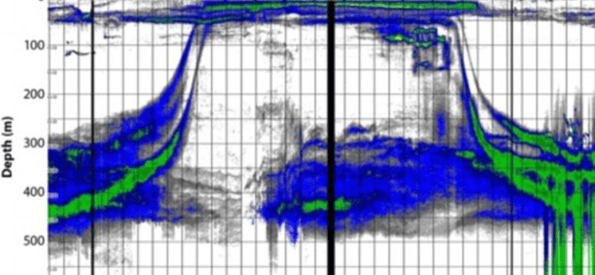Mysterious buzzing in the Pacific Ocean
Mysterious buzzing in the Pacific Ocean
Mysterious ‘buzzing in the Pacific Ocean may be caused by deep sea creatures emitting gas that acts like ‘a dinner bell’
- Californian researchers used hydrophones to measure humming noise
- Noise is created when deep sea creatures head to the surface to feed
- May be a ‘dinner bell’ communication or the sound of them farting

-
A mysterious noise coming from the depths of the Pacific Ocean has baffled scientists for years.
Now marine biologists thinks they have the answer – and it may be as simple as fish emitting gas as they travel towards the ocean’s surface to find food under the cover of darkness.
However, their leading theory is that the sound may serve as a ‘dinner bell’ for fish, shrimp, jellies and squid living in the mesopelagic zone, 600 to 3,300ft (200 to 1,000 metres) below the waves.
-
Scientists have ruled out the noise coming from whales because it is too loud.
Marine biologists from the University of California San Diego and the National Oceanic and Atmospheric Administration, which are both in La Jolla, California, said the deep-water organisms play a key role in ocean food webs and the global carbon cycle and that by studying them, scientists could better understand this mysterious ecosystem.
-
The module above captures the low-frequency buzz made by a massive community of animals as they move from deeper mesopelagic waters up to surface waters to feed at
The ocean’s mesopelagic zone is a dark world because very little light filters down to its depths and without sunlight, food is less abundant.
This means that at dusk, many of the deep-water dwellers migrate up to the nutrient-abundant surface waters to feed, relying on the darkness to protect them from predators, before sinking back down to the dark mesopelagic zone for protection at dawn.
Dr Baumann-Pickering and her team used sensitive acoustic instruments called hydrophones to measure the sound associated with this daily journey and found it is the ‘buzz’.
While they are not yet certain which animals in the mesopelagic zone are creating the sound, they believe small bony fish that are abundant in the zone are the most likely suspects.
The sound is three to six decibels louder than the background noise of the ocean, making it difficult for the human ear to distinguish.
‘It’s not that loud, it sounds like a buzzing or humming, and that goes on for an hour to two hours, depending on the day,’ Dr Baumann-Pickering said.
It is well-known that dolphins, whales and other marine mammals use sound to communicate underwater, but acoustic communication among smaller animals, like those living in the mesopelagic area, is more difficult to hear and hasn’t been well studied by scientists.










